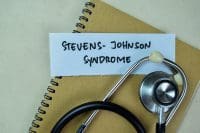Traumatic brain injury (TBI) can be devastating, with death the worst-case scenario. In patients who survive, TBIs can cause a wide range of problems. Some of these are relatively minor impairments that resolve on their own or can be managed with adaptive cues and devices. But in many cases, TBIs result in crippling and lifelong physical, emotional, cognitive, and social disabilities that leave patients totally dependent and needing placement in long-term care facilities. What’s more, the consequences of severe TBI may extend not just to the patient’s family and friends but to the entire community.
Specific injuries resulting in TBI vary widely and include motor vehicle accidents, sports injuries, falls, assaults, penetrating injuries, blast injuries, and combat injuries. Such trauma can result in conditions such as epidural, subdural, subarachnoid, or intracerebral hemorrhage or hematoma; diffuse axonal injury resulting from shearing injury; and open skull fractures with concurrent brain injury.
Many TBI patients have additional injuries that may complicate management, such as cardiac or pulmonary contusion, rib fractures, pneumothorax, and abdominal and orthopedic injuries. This article describes for med-surg nurses the initial crucial aspects of care for patients with severe TBIs, as well as continued care requirements for both patients and their families.
Overview
An estimated 1.5 million TBIs occur each year in the United States. This figure doesn’t include military combatants or patients who receive care in physicians’ offices or outpatient centers, so the true incidence may be higher. TBI is the leading cause of death and disability in persons ages 1 to 44. It strikes more males ages 15 to 24 than any other age-group. Generally, males are twice as likely as females to experience TBIs.
The Brain Trauma Foundation (BTF) defines severe TBI as a Glasgow coma scale score of 3 to 8. A TBI diagnosis is based on computed tomography (CT) brain scans showing such abnormalities as hematoma, contusion, swelling, herniation, or compression of the basal cistern; or a history of circumstances suggesting TBI in conjunction with physical findings indicating potentially compromised neurologic function.
Certain factors predispose patients to TBI even when CT findings are negative. For instance, based on research findings, some facilities may add this category to the definition—a normal CT scan in a patient with two or more of the following:
- age older than 40
- unilateral or bilateral motor posturing
- systolic blood pressure below 90 mm Hg.
Inside the injured brain
The healthy brain uses approximately 20% of resting cardiac output, requires about 750 mL of blood flow/minute, and extracts nearly 40% of the oxygen it receives. Because it lacks an oxygen or glucose (energy) reserve, it can’t compensate well when blood flow is disrupted by an injury, subsequent systemic hypoperfusion, or the secondary injury phase (cerebral hypoperfusion).
Also, the brain is confined inside the rigid skull. The Monro-Kellie hypothesis states that three substances—brain tissue, cerebrospinal fluid (CSF), and blood—occupy the intracranial space. The largest of these, brain tissue (80%), is the one that TBI interventions are least able to affect directly.
The brain’s normal compliance gives it a limited ability to compensate for increases in intracranial pressure (ICP). In TBI, the brain becomes edematous and stiffer, making it less able to respond to increased volume and other changes. As cellular dysfunction and cellular death occur, brain swelling worsens and the cycle repeats. If ICP rises too high or brain compliance is too low, decompensation occurs. As volume increases, ICP rises; as ICP rises, the brain becomes more compromised because of inadequate blood flow and cellular dysfunction, possibly leading to cellular death. (See Phases of brain injury by clicking on the pdf icon above.)
Diagnosis
On admission, a patient with severe TBI undergoes CT brain scanning. Usually, a follow-up scan is obtained within the next 24 hours as clinically indicated—for instance, if the patient’s neurologic status changes or sudden ICP instability occurs.
Assessment
Patients with severe TBI are highly compromised and usually can’t communicate, either because of the injury itself or the need for mechanical ventilation. Nonetheless, basic elements of a neurologic assessment should be conducted. Subtle findings that could signal a change in the patient’s condition may be missed after a shift change; therefore, at hand-off times joint assessment by the offgoing and oncoming shift nurses may be advisable.
Components of the neurologic assessment should include:
- level of consciousness
- spontaneous movement and muscle tone
- pupil size and reactivity
- reflexes
- muscle tone and posturing
- respiratory pattern
- somatic complaints (typically communicated nonverbally)
- response to pain. (See Increased ICP: Early and late indicators.)
Management
A TBI patient may require surgery to stop the bleeding or create more room in the skull for the swollen brain. In 1995, the BTF developed the first TBI management guidelines based on recommendations from an international panel of experts. Updated in May 2007, these guidelines represent minimal care recommendations; many patients require more aggressive interventions. The section below discusses general interventions for patients with TBIs.
Multidisciplinary care team
A coordinated, multidisciplinary healthcare team should be established at the time of the patient’s admission and implemented for the duration of hospitalization. It should include one or more physicians (such as trauma surgeons, intensivists, and neurosurgeons), nurses, respiratory therapists, pharmacists, nutritionists, physical therapists, occupational therapists, speech language pathologists, physiatrists, case managers, social workers, and clergy. The patient’s family should be involved as well.
Blood pressure and volume management
Expect an arterial catheter to be inserted, to monitor blood pressure and allow frequent blood sampling. During the acute post-injury phase, BTF guidelines state that hypotension should be avoided; if it occurs, the patient’s volume status should be evaluated first and hypotension should be corrected rapidly.
A urinary catheter is inserted to assess adequacy of renal perfusion. The kidney requires 20% to 25% of cardiac output; commonly, it’s the first organ to show the effects of impaired perfusion or intravascular volume.
The care team should establish multiple I.V. access sites. Usually, at least one of these sites is for a central venous catheter (CVC), which allows fluid and drug administration as well as central venous pressure monitoring to assess volume status. If volume status is inadequate, the patient should receive additional I.V. fluids. For persistent hypotension, continuous infusion of a vasoactive drug (such as dopamine or norepinephrine) should begin once adequate intravascular volume is restored.
As the patient’s volume and blood pressure status stabilize and intracranial hypertension resolves, the need for aggressive volume management and vasoactive drugs decreases; gradually, these interventions are eliminated. To minimize the risk of bloodstream infection, invasive vascular devices (such as a CVC and an arterial line) should be removed as soon as the patient stabilizes.
Brain and tissue oxygenation
Low peripheral oxygen saturation values or low arterial blood oxygen values (as shown by arterial blood gas testing) should be avoided. Maintaining adequate brain tissue oxygenation seems to improve patient outcomes. However, systemic oxygen levels don’t always accurately represent the brain’s oxygen level; to assess this level directly, a special catheter may be inserted into the brain or jugular vein. If such a device is used, oxygen administration can be adjusted accordingly.
Also, many TBI patients require prolonged mechanical ventilation and may benefit from a tracheotomy. A tracheotomy helps reduce the risk of ventilator-associated pneumonia (VAP), as do suctioning of secretions above the tracheotomy cuff, maintaining the head of the bed at 30 degrees, and performing good oral care every 4 hours.
Ventilation
The patient’s arterial carbon dioxide (CO2) value should be maintained in the low-normal range. A very low CO2 level can contribute to vasoconstriction, which in turn may decrease cerebral blood flow. As intracranial hypertension resolves, the CO2 level can be allowed to return to the normal range. Nursing care includes continual monitoring for hypoventilation (as shown by diminished breath sounds and somnolence increased from baseline) and assisted secretion removal.
Osmotherapy
Osmotherapy aims to increase the osmolality of the intravascular space, which in turn helps mobilize excess fluid from brain tissue. If ICP increases, mannitol (an osmotic diuretic) may be given to decrease cerebral edema, transiently increase intravascular volume, and improve cerebral blood flow. Hypertonic saline solution (saline concentrations of 3% to 24%) may be used to promote osmotic mobilization of water across the blood-brain barrier.
ICP monitoring
To aid rapid identification of increased ICP, a monitoring device may be inserted through a small hole drilled into the skull. Parenchymal, epidural, subdural, and subarachnoid monitoring devices can be used. In some cases, an extraventricular drain (ventriculostomy) may be placed.
When caring for a patient with any of these devices, follow aseptic standards scrupulously. Evaluate CSF characteristics (including cloudiness and volume changes) to help detect infection early. Perform routine care for the insertion site. Also, minimize entry into the drainage system and maintain such safety precautions as restricting changes in head-of-bed elevation and securing the extraventricular drain to prevent dislodgment.
CPP monitoring
Cerebral perfusion pressure (CPP) should be maintained at an appropriate level by optimizing volume status, as with I.V. fluids, osmotherapy, and vasoactive drugs. A brain-tissue oxygen monitor may be used to help determine which CPP and ICP levels the patient tolerates best.
Anesthetic, sedative, and analgesic agents
Short-acting anesthetic and sedative-analgesic agents, such as propofol and fentanyl, typically are given. When dosages are decreased, the patient can be awakened quickly, permitting nonpharmacologically tainted assessment of neurologic status. Use caution, though, when explaining such “wake-up” assessment to family members; inform them that the patient doesn’t actually wake up and return to a pre-injury condition.
As the patient improves, dosages are reduced gradually. The patient must be monitored for pain; if needed, enterally administered analgesia should be considered to manage pain without causing significant neurologic status changes.
Pentobarbital may be given to control increased ICP in patients who don’t respond to first-line therapies. Called pentobarbital coma, this approach minimizes the brain’s electrical activity for several days. The exact mechanism of pentobarbital coma isn’t known.
Temperature management
The damaged brain is more susceptible to increased temperature, so the patient should be kept normothermic (typically at 95° to 98.6° F [35° to 37° C]) to reduce brain metabolism and promote anti-inflammatory effects. Cooled water or saline solution circulated through external body wraps or special intravascular cooling catheters can be used to maintain the desired temperature. Although ice packs may be used, they are labor intensive and may lead to inconsistent cooling.
Once intracranial hypertension resolves, the patient’s temperature can be allowed to normalize.
Venous thromboembolism prophylaxis
TBI patients are at increased risk for venous thromboembolism (VTE). In some cases, antiembolic stockings or pneumatic compression devices may be used. Once the risk of hemorrhage passes, low-molecular-weight heparin may be given. Also, inferior venal caval filters may be placed transvenously. Screening duplex ultrasound studies of the legs may be done to help identify VTE. If VTE occurs, carry out appropriate interventions.
Seizure prophylaxis
TBI may increase the risk of nonepileptic seizures in a small number of patients. Seizures that immediately follow the injury or arise during the early post-injury phase presumably are a reaction to the initial trauma; those arising more than 2 weeks after injury are thought to stem from permanent changes in brain structure. Although the seizure risk is low, seizures increase metabolic activity and oxygen demands, which may further compromise the damaged brain.
Routine seizure prophylaxis later than 1 week after a TBI isn’t recommended. However, if needed, phenytoin or valproate can be given.
Steroids
The BTF doesn’t recommend giving steroids because these drugs haven’t been shown to decrease ICP or improve outcomes.
Nutrition
Initially, a nasogastric or orogastric tube is inserted to decompress the stomach and reduce the aspiration risk. (Typically, the nasal route is avoided as it can obstruct sinus drainage, leading to sinusitis or VAP.)
TBI patients have increased metabolic demands, so parenteral or enteral nutrition should begin as soon as tolerated. Nutritional target goals should be met by day 7. A small-bore feeding tube may be placed into the small intestine or a percutaneous gastrostomy tube may be used to deliver nutrition and decrease the aspiration risk.
Positioning
In patients with increased ICP, frequent turning and repositioning may not be possible. As ordered, keep the head of the bed elevated at least 30 degrees with the patient’s neck in neutral alignment, to promote venous drainage of the brain and reduce brain swelling. This position also decreases the risk of aspiration and VAP. A patient with impaired oxygenation and ventilation may be placed on a kinetic therapy bed or may be positioned prone. During patient turning and repositioning, take measures to prevent skin breakdown.
Bladder care
To decrease the risk of urinary tract infection, the urinary catheter is removed after ongoing assessment of urine output is no longer critical. If the patient is incontinent, use good-quality diapers and protective barrier creams. A male patient may benefit from use of a condom catheter.
Bowel care
A preventive bowel care regimen should be established, as fluid restriction (used to help decrease cerebral swelling), limited mobility, and enteral nutrition may contribute to constipation. Patients with TBIs also are at risk for stress ulcers, so be prepared to give hydrogen ion blockers.
Minimizing environmental stimulation
The damaged brain can’t process information as it normally does, which may lead to increased ICP and, in later stages of recovery, agitation and restlessness. Take measures to limit noise and conversation in the patient’s room; keep light levels low and minimize tactile stimulation. As the patient’s condition improves, assess tolerance to stimulation and adapt the level of stimulation as appropriate.
Ensuring patient safety
If the patient becomes restless or agitated, investigate the cause and take appropriate interventions. Causes include emergence from coma, analgesic or sedative withdrawal, excessive environmental stimulation, and discomfort resulting from pain, constipation, incontinence, feeling too hot or too cold, wrinkled bed linens, body positioning, or pressure points caused by splints.
Explain all care measures even if you’re not sure the patient understands what’s being said. Secure all devices and equipment and keep these out of the patient’s sight and reach; even a seemingly simple device can pose a hazard to a confused or agitated patient. Use a soft voice and speak slowly to give the patient time to process information. Remember that the familiar voice of a family member or friend may calm the patient and decrease anxiety. If restraints are needed, they should be applied for the shortest duration possible; in some cases, a netted safety bed may be considered.
Rehabilitation and consultations
Use splints as ordered to maintain the patient’s hands and feet in functional positions and decrease the risk of contractures. As soon as possible, start range-of-motion exercises and mobilization out of bed.
During the early post-injury period, consult such services as physical therapy, occupational therapy, speech language pathology, and physiatry as needed.
Providing care for the patient’s family
Because TBI affects the patient’s entire family, continuing care must address family members. They will require a great deal of emotional support and preparation for what could be a prolonged recovery and permanent disabilities.
Family members may be spending endless hours at the bedside, watching for anything that could signal a change in the patient’s condition. Prepare them for good days and bad days, and explain that the patient’s progress may be slow. Know that maintaining caregiver continuity can help establish a good relationship with family members, whose coping skills may be depleted by fatigue, stress, fear, grief, anger, and frustration.
The family is likely to seek information from multiple sources, not all of which may be reliable. Offer factual, honest information. Explain that TBI may lead to personality changes and physical and cognitive impairments and that full recovery may not be evident for many months or even years. Tell them that family relationships and roles may change because of the patient’s condition.
Encourage them to establish and draw on support systems early on. As appropriate, refer them to case managers and social workers for assistance in providing support, identifying community resources, arranging for patient transfer to a rehabilitation or long-term care facility, and assistance with such legal issues as establishing power of attorney.
In recent years, more aggressive initial management of TBI has led to improved patient outcomes. Still, patients and their families are likely to require extensive ongoing support. By learning as much as you can about appropriate care, you can help them cope with the consequences of this profoundly life-altering injury.
Selected references
American Association of Neuroscience Nurses. AANN Core Curriculum for Neuroscience Nursing. 4th ed. St. Louis, MO: Saunders; 2004.
Barker E. Neuroscience Nursing: A Spectrum of Care. 3rd ed. Philadelphia, PA: Mosby; 2007.
Brain Trauma Foundation. Guidelines for the Management of Severe Traumatic Brain Injury. 3rd ed. New York, NY: Brain Trauma Foundation; 2007.
Hanks RA, Rapport LJ, Vangel S. Caregiving appraisal after traumatic brain injury: the effects of functional status, coping style, social support and family functioning. NeuroRehabilitation. 2007;22(1):43-52.
Lescot T, Abdennour L, Boch AL, Puybasset L. Treatment of intracranial hypertension. Curr Opin Crit Care. 2008;14:129-134.
For information on surgical interventions for TBIs and for a complete list of selected references, visit www.AmericanNurseToday.com/Archives.aspx.
Debra L. Ryan is a clinical nurse specialist in Adult Critical Care at Spectrum Health in Grand Rapids, Michigan. The planners and authors of this CNE activity have disclosed no relevant financial relationships with any commercial companies pertaining to this activity.



















9 Comments.
Hello,
This article is very unique and this information is very beneficial for health. thanks for share us.
I have a friend that went into the hospital to have a brain aneurysm removed and the artery was punctured and the surgery stopped. I am at a loss of what I can do to help her. She has been in the ICU unit for over 2 weeks now and seems to me some crude medical practises are being used. She is experiencing high temp of 102-103 with them using a box fan blowing air directly on her on high speed and ice packs placed on her chest and abdomen. She does recognize some people by their voice and she continues to talk constantly but jumps from one subject to another which she did before the surgery. Is this a good sign? She doesn’t know where she is but does know her last name and can wiggle her toes when commanded too. I am so overwhelmed at her condition and not sure that her 35 yr old son is capable of making the right decisions for her on the information he is given. What do you suggest I can do to help? Thank you
I am lifting your friend up to Father, seeking comfort, healing, and recovery, in Jesus name, amen, thank you Father.
I like that you mentioned that patients with severe TBI are usually unable to communicate and a professional needs to be able to find subtle changes that could signal changed in the patient’s health. I’ve had a relative of mine suffer a TBI and it was a lot of work for the hospital to take care of him. I also like that you mentioned the components of neurologic assessment, I found it very interesting.
I find it scary when you said that there is an estimate of 1.5 US patients that have been diagnosed with a traumatic brain injury every year. Learning about this convinced me to look for a local emergency healthy center for my sister’s trip next weekend. Doing this and recommending one for her will help save her or any of her friends’ lives during the vacation in case they get injured like that.
Hello,
I like a blog article in nice and unique information.
Thank you for share us
Hello,
I like a blog article is caring for patients with traumatic brain injuries.
Thank you for share us
As caregivers and providers, it is paramount to underscore the brain injury patient family emotional needs and support throughout the challenging treatment journey from the ER to rehabilitation settings. How do we as nurses set the wheels rolling? (1) Take few minutes out of your time to explain in a lay man’s term what is going on with the patient from your nursing perspective as soon as the patient is stabilized at the ER. (2) The sooner a Care Progression Meeting takes place with the patient representatives, the better as it relates to assisting the family emotionally. The meeting will also serve as a forum to map out what to expect throughout the patient hospital stay. Moreover, you should provide an empathetic atmosphere for family members to process the critical situation, ask questions, and clarify issues. (3) You should continue to be the patient advocate for the best treatment and rehab options as they adapt to their new life.
I think that it is really interesting that there are many types of different therapy for brain injuries. Specifically, I did not know that osmotherapy was something that could be done. I think it is awesome that doctors can mobilize excess fluid from brain tissue.